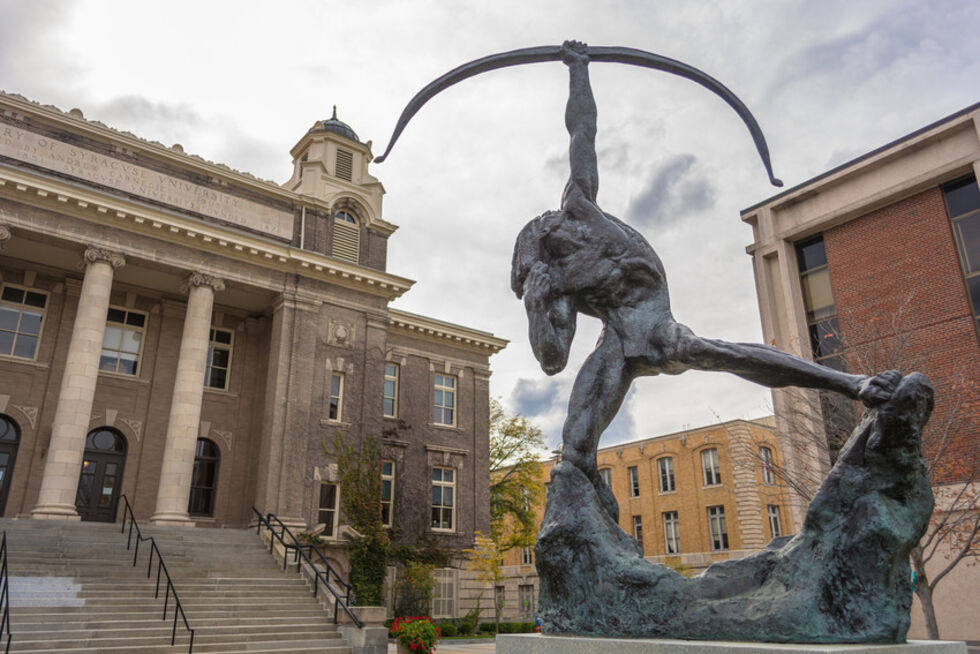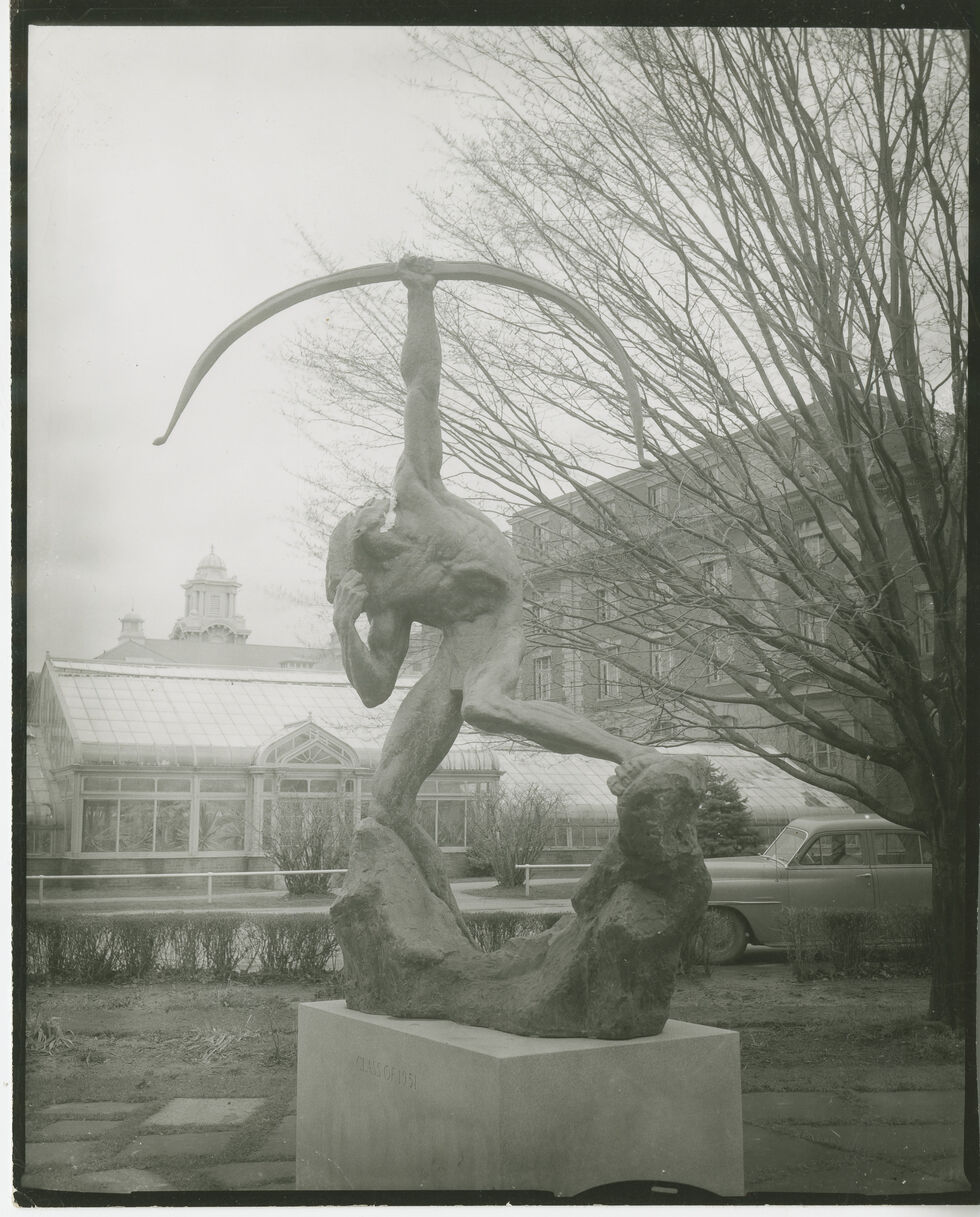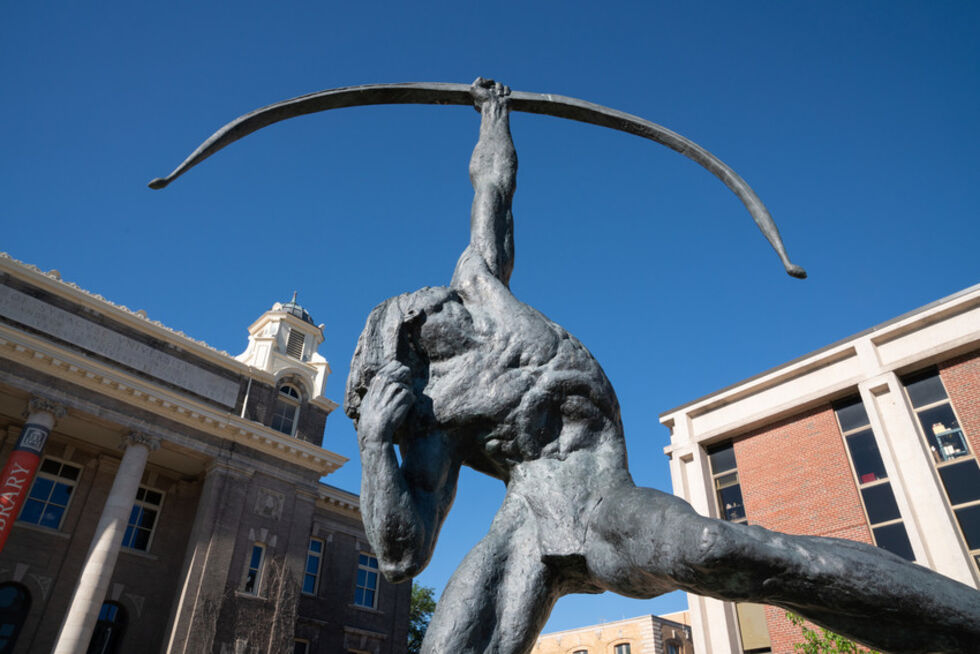Saltine Warrior Statue
"Saltine Warrior" by Luise Meyers Kaish , 1951
The bronze Saltine Warrior statue was created by American artist Luise Meyers Kaish. Kaish created the piece after winning an SU School of Art competition. The Saltine Warrior was said to be a Native American figure, named Big Chief Bill Orange, but this figure was a hoax published in The Syracuse Orange Peel magazine in 1931. The remains of a 16th century Onondagan chief were supposedly found in the excavations near Steele Hall, and Kaish designed the original mascot for Syracuse University athletic teams in 1951 based on this myth. The Saltine Warrior mascot stayed with SU from the early 1930s to the late 1970s before being retired following protests from a Native American student group who found the “wild” portrayal of the mascot offensive. Following the Saltine Warrior the University went through a series of mascot substitutes, including a Roman-style gladiator, a Superman knockoff, a troll, Vita the Goat, and even a man in an orange tuxedo. The school settled on Otto the plush orange in 1980.
Artist Luise Kaish received her BFA magna cum laude and MFA in Sculpture from Syracuse University in 1946. She studied with the renowned Croatian Sculptor and SU professor Ivan Mestrovic at SU. As a graduate student, Kaish created her first large commissioned work, The Saltine Warrior, which stands on SU’s campus in front of Carnegie Library. Luise Kaish was a Rome Prize Fellow, a Guggenheim Fellow, and was awarded the Arents Pioneer Medal from Syracuse University. Kaish’s Saltine Warrior, her first commissioned piece, was presented as a gift to the University from the Class of 1951. Interestingly, Kaish arranged for a member of the Onondaga Nation to pose for her statue.
Luise Meyers Kaish was born in Atlanta, Georgia on September 8, 1925. Kaish was an influential sculptor, painter, collagist and educator in the New York art scene in the late 1970’s and 1980’s. She earned her BFA from Syracuse University in 1946. After receiving a grant, Kaish spent a year in Mexico City collaborating with various artists. After completing her undergraduate studies, she returned to Syracuse University to earn her MFA while under the preceptorship of Ivan Meštrović, a Croatian sculptor. In 1951, she received her first major commission, a life sized bronze sculpture, known as the Saltine Warrior, at the time, a symbolic figure for the University. Throughout her career, Kaish’s work was exhibited and collected by major museums that included: Smithsonian Institution's National Museum of American Art, the Museum of Modern Art, the Whitney Museum, the Jewish Museum, and the Metropolitan Museum of Art. She was most notable for her monumental sculptures in bronze, aluminum, and stainless steel. Kaish had a lifelong interest in the spiritual and metaphysical which influenced her work through the natural, cultural, and philosophical themes. She passed on March 7, 2013 in New York City.
SU University Archives; Buckley, M. (2017). Explore the SU campus through these 6 historic statues; Society of Fellows. Obituaries: Luise Katish, FAAR ’72; Louise Kiash.com; SU Photo and Imaging Archive.


